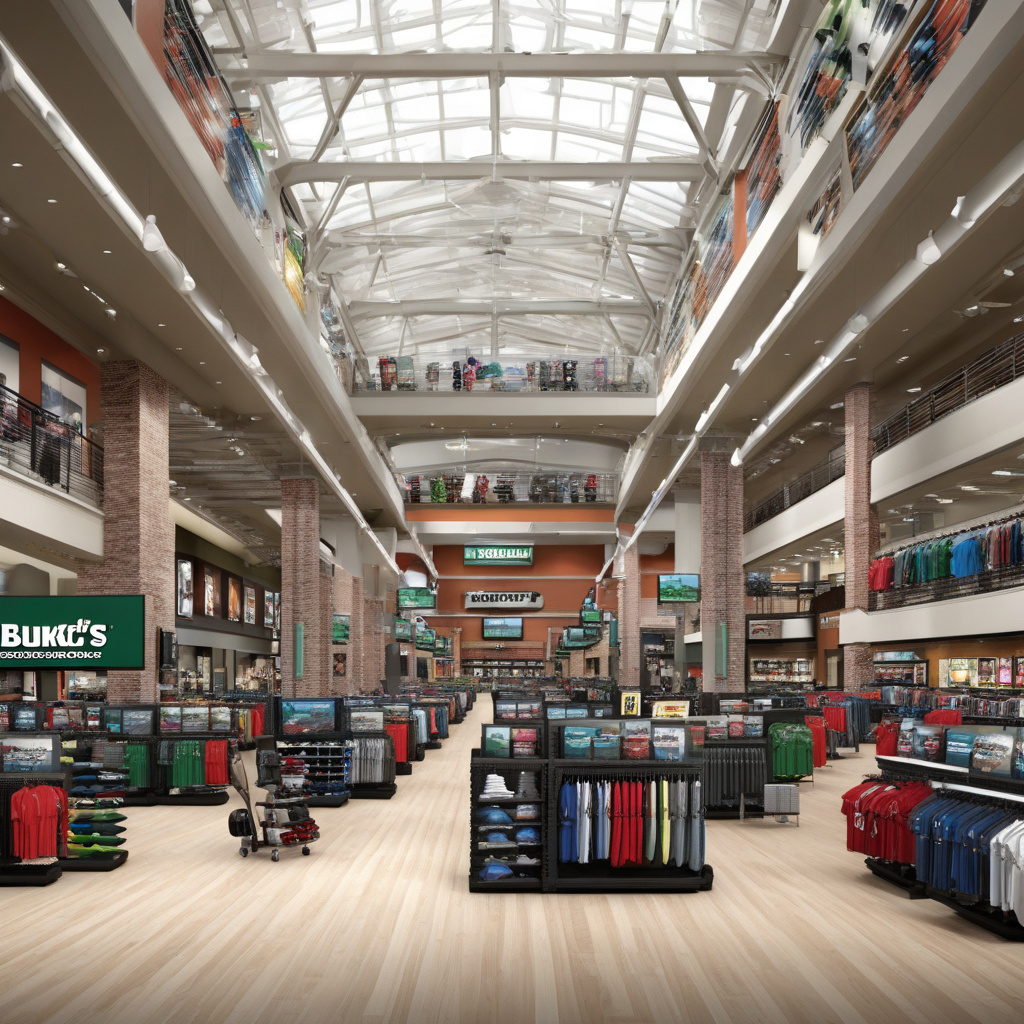As Many Retailers Shrink Their Footprints, Dick’s Sporting Goods Goes Big
In a retail landscape increasingly characterized by downsizing and streamlined operations, Dick’s Sporting Goods is making a bold statement by expanding its physical presence. While many retailers are opting for smaller stores and a more online-focused approach, Dick’s is doubling down on the in-store experience, proving that there is still room for growth in physical retail.
The transition many retailers have made towards a more digital-centric model was largely accelerated by the pandemic, which forced consumers to adapt to online shopping. However, Dick’s Sporting Goods has chosen a different path. The company has announced plans to open new locations and even redesign existing stores, investing heavily in a strategy that focuses on larger retail spaces. This decision comes at a time when many brands are contracting their footprints or shuttering locations altogether. But Dick’s is betting on the power of the in-person shopping experience, and their strategy appears to align well with current consumer preferences.
One of the key elements driving Dick’s expansion is the growing interest in outdoor activities and fitness. The pandemic spurred a surge in participation in sports and outdoor pursuits, as people sought safe ways to engage in physical activity. This phenomenon has created a ripe market for sporting goods retailers. Dick’s has recognized this trend and is capitalizing on it by providing customers with a wide array of products across various categories, from traditional team sports to outdoor gear for hiking, camping, and fitness.
The strategic decision to open larger stores allows Dick’s to create an immersive shopping experience. The new store layouts are designed not just for product display but to foster an environment where customers can interact with the brand. For instance, enhanced product demonstrations, interactive displays, and areas for community events are becoming common features in these larger stores. This approach not only builds brand loyalty but also encourages customers to spend more time in-store, which can lead to increased sales.
Moreover, Dick’s Sporting Goods is leveraging technology to enhance the shopping experience. The integration of mobile apps and online platforms allows customers to check inventory, reserve products, and even order online for in-store pickup. This omnichannel strategy effectively bridges the gap between digital and physical retail, ensuring customers have a seamless shopping experience.
In contrast to Dick’s approach, many other retailers have been retrenching, citing rising costs and changing consumer behaviors. For instance, several department stores and specialty retailers have announced closures, citing the need to adapt to the digital age. Retail giants such as Macy’s and JCPenney have reduced their store counts significantly, moving towards a more online-centric model. While this strategy may yield short-term savings, it risks alienating customers who still value the tactile experience of shopping in a store.
Dick’s Sporting Goods has also been proactive in addressing evolving consumer expectations. The company has made significant investments in sustainability, ensuring that many of its products are environmentally friendly. This commitment resonates with today’s consumers, who increasingly prioritize sustainable practices when making purchasing decisions. By aligning their business model with these values, Dick’s is not only attracting new customers but also reinforcing loyalty among existing ones.
The financial implications of Dick’s expansion strategy cannot be overlooked. As sales in the sporting goods sector have surged, fueled by the pandemic-induced interest in fitness and outdoor activities, Dick’s is well-positioned to capture a larger share of this growing market. In fact, the company reported impressive earnings growth in recent quarters, driven by both online and in-store sales. This financial performance provides the necessary capital for further expansion and innovation.
Additionally, the larger store formats allow Dick’s to diversify its offerings, introducing exclusive brands and collaborations that can only be found in their stores. This not only enhances the shopping experience but also differentiates Dick’s from competitors. Exclusive product lines create a sense of urgency and desirability, encouraging customers to visit the store rather than shopping online.
In conclusion, while many retailers are scaling back and adapting to a new normal dominated by online shopping, Dick’s Sporting Goods is taking a different approach by significantly expanding its footprint. By investing in larger stores, enhancing the customer experience, and aligning with consumer values, Dick’s is positioning itself as a leader in the sporting goods market. Their strategy not only reflects confidence in the future of physical retail but also highlights the potential for growth even in challenging economic times. As traditional retail continues to evolve, Dick’s Sporting Goods is a testament to the fact that there is still a place for big ideas and bold moves in the industry.
retail, Dick’s Sporting Goods, business strategy, consumer behavior, outdoor activities
